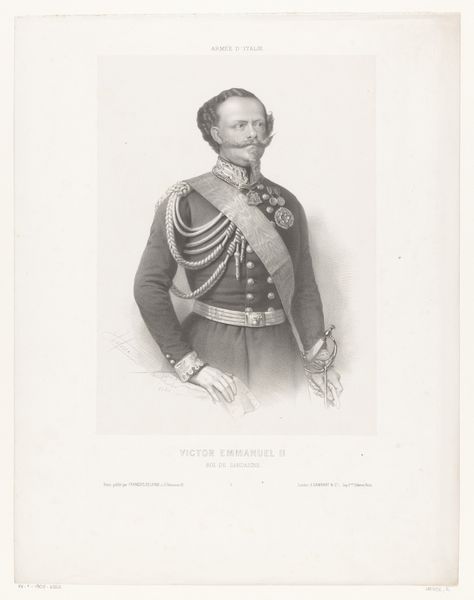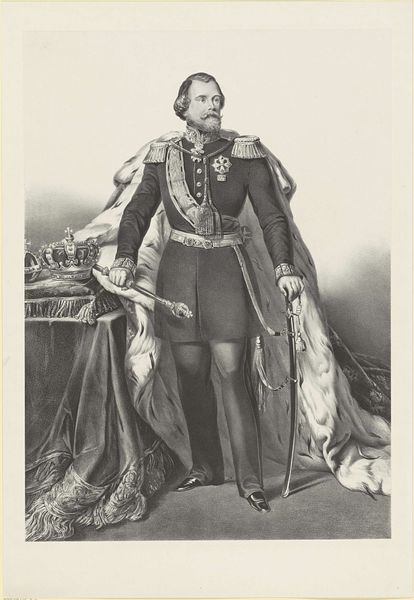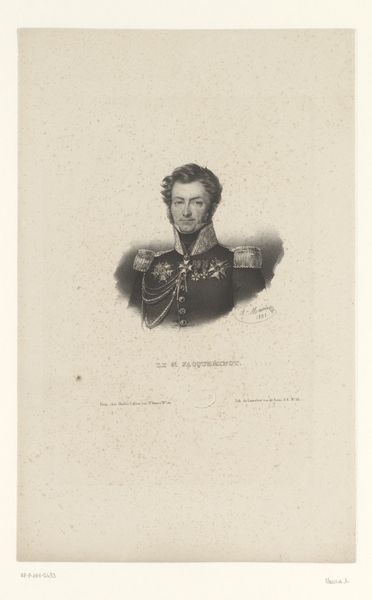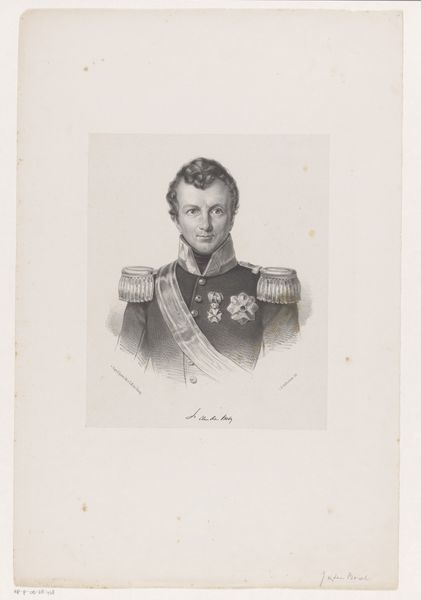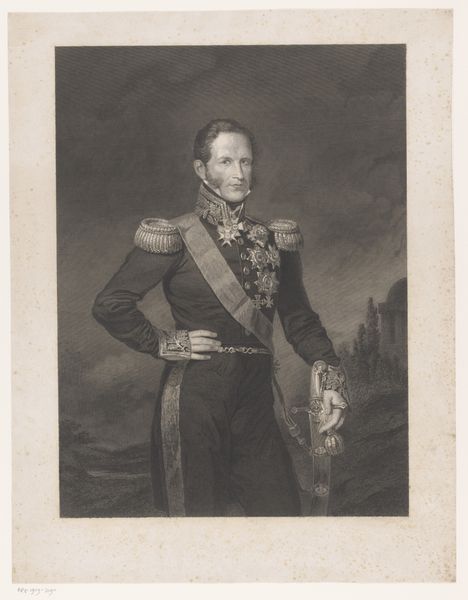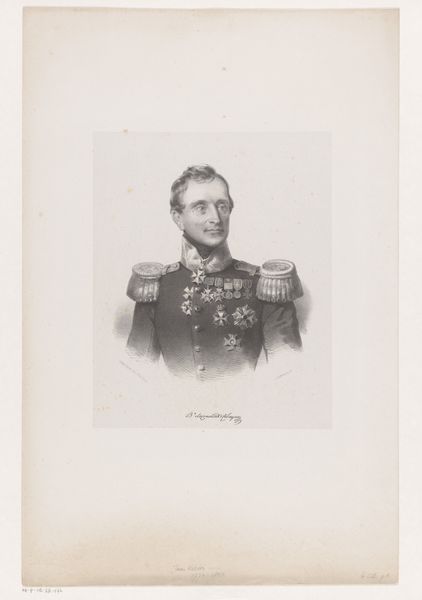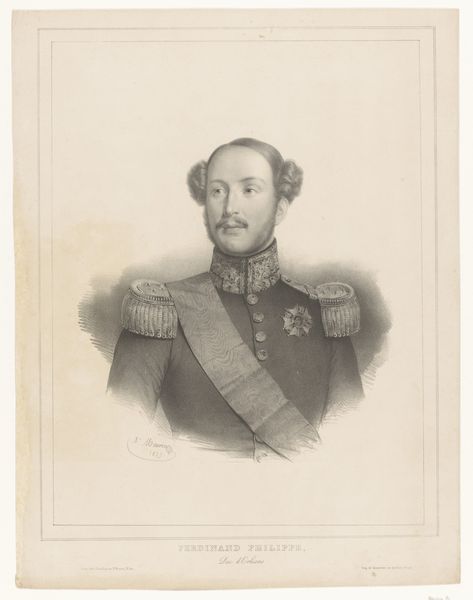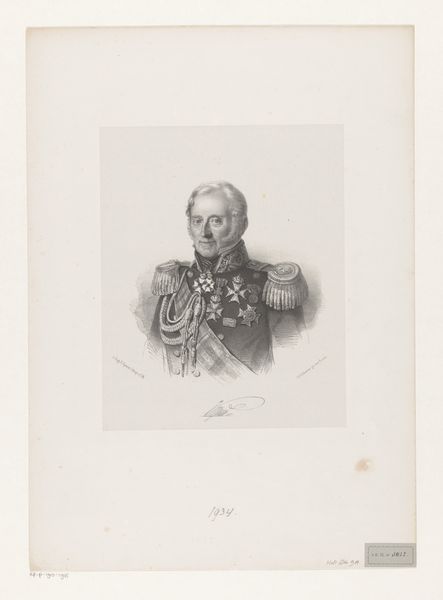
print, engraving
#
portrait
# print
#
romanticism
#
19th century
#
history-painting
#
engraving
Dimensions: height 583 mm, width 411 mm
Copyright: Rijks Museum: Open Domain
This portrait of an unknown man, possibly Chr. von Fabrici, was created by Johann Georg Weinhold in the 19th century, using lithography. Lithography is a printmaking process that relies on the simple principle that oil and water don't mix. The artist would have drawn the image onto a flat stone or metal plate using a greasy crayon or ink. The stone is then treated with chemicals, so that the image attracts ink, while the surrounding areas repel it. When printed, the image transfers to the paper, creating a detailed impression. In this portrait, lithography captures the subject's likeness and the intricate details of his military attire, from the heavy epaulettes to the delicate embroidery. The process itself is laborious, demanding skill and precision. Lithography emerged alongside the Industrial Revolution, offering a relatively inexpensive method for mass production of images. This portrait, therefore, speaks to the changing landscape of art and society, where traditional craftsmanship intersected with new technologies. Thinking about the materials and processes involved gives us a deeper appreciation for the skill and artistry behind this portrait, challenging any simple distinction between fine art and craft.
Comments
No comments
Be the first to comment and join the conversation on the ultimate creative platform.

